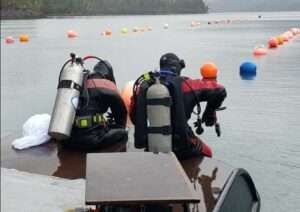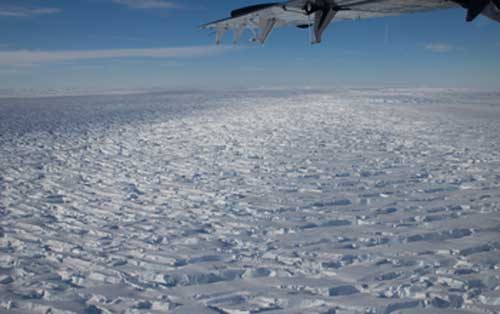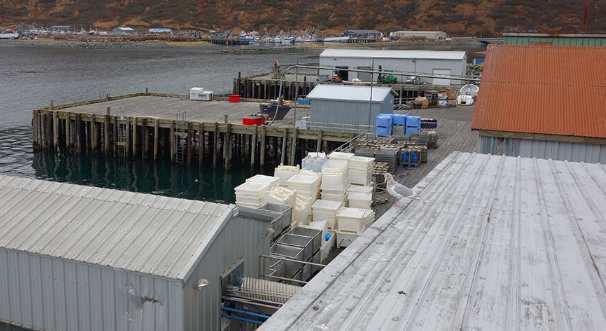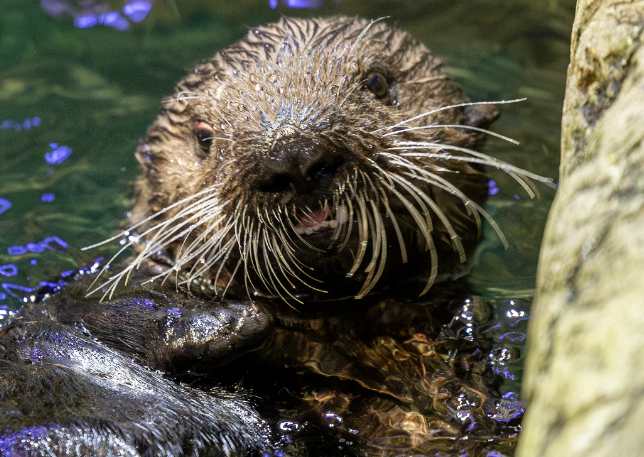
Interface of Change project director Brenda Konar, left, and University of Alaska Fairbanks postdoctoral researcher Brian Ulaski, right, prepare to survey an oyster mariculture farm in Simpson Bay near Cordova.
The National Science Foundation has awarded $20 million to the University of Alaska to investigate climate change effects on culturally and commercially important marine species in the Gulf of Alaska.
Interface of Change is the sixth five-year, multimillion dollar project directed by the Alaska Established Program to Stimulate Competitive Research, a statewide program administered at the University of Alaska Fairbanks since 2001 and funded by the NSF.
The project will unite 23 researchers from UAF, the University of Alaska Anchorage and the University of Alaska Southeast. They will partner with eight Gulf of Alaska communities: Seldovia, Halibut Cove, Homer, Cordova, Valdez, Juneau, Haines and Klukwan.
As climate change warms temperatures, increasing glacial melt flushes large amounts of freshwater, sediment and nutrients into the Gulf of Alaska, altering the conditions of the nearshore coastal environment.
Researchers will study the effects of these changes on coastal species and the well-being of people and economies who rely on them. Project goals stem from conversations with local community members, tribal entities, shellfish and kelp farmers, and government agency representatives that took place over two years with the help of an NSF planning grant. The grant allowed researchers to listen to community concerns and develop relevant questions.
“We really want our research to be relevant to the people closest to the issues,” said Alaska EPSCoR project director Brenda Konar. “The best way to do this is to have these people be partners developing the science.”
Alaska Sen. Lisa Murkowski praised the project’s value.
“This funding will equip local experts with the necessary knowledge to cultivate resilient business practices, help coastal infrastructure, and will further cement the University of Alaska Fairbanks as a preeminent research institution,” Murkowski said.
Community input focused the project on red seaweeds, kelp, oysters, clams, mussels, salmon and eulachon (commonly called hooligan or candlefish).

Skye Steritz (at center), owner of Noble Ocean Farms in Cordova, tends sugar kelp. Steritz is an advisory board member for Alaska EPSCoR.
Time spent in communities yielded several key community collaborators from each region of the Gulf of Alaska who contributed to project planning and who will continue to guide the Interface of Change project’s direction. Among them is Skye Steritz, owner of Noble Ocean Farms in Cordova.
“I have been very impressed by how engaged the scientists are with the communities they work in,” Steritz said. “We need research like this that is grounded in stakeholder priorities.”
Davin Holen, one of the project’s five co-leaders, and University of Alaska Anchorage epidemiology researcher Mica Hahn will arrange annual workshops to invite community feedback and discuss progress in group discussions. They will hire local coordinators to facilitate workshops and offer an honorarium for community participants “as a respect for the time and the information they’re giving.”
People interested in project updates will be able to browse online dashboards and databases that will make project data and results publicly available.
Multiple additional UA programs, tribal organizations, government agencies and ocean research groups will collaborate on the project.
“Science, technology, and innovation-based solutions for mitigation, adaptation, and resilience to climate events are increasingly important to our nation’s communities,” said NSF Director Sethuraman Panchanathan. “This important EPSCoR award will help build resiliency to climate risks unique to Alaska, educate their citizens, protect infrastructure and safeguard these states’ economic futures.”
[content id=”79272″]








